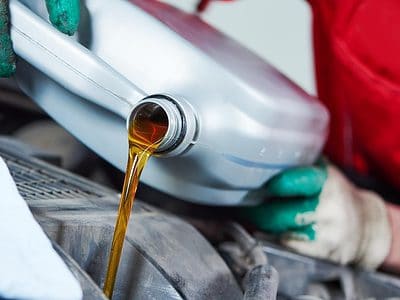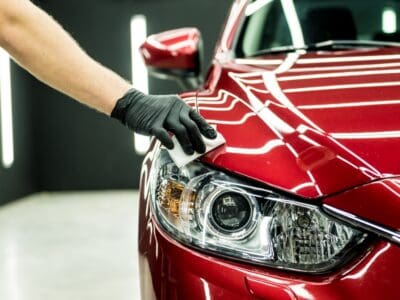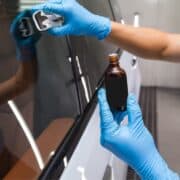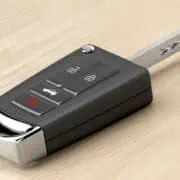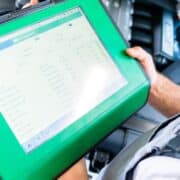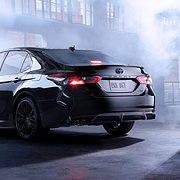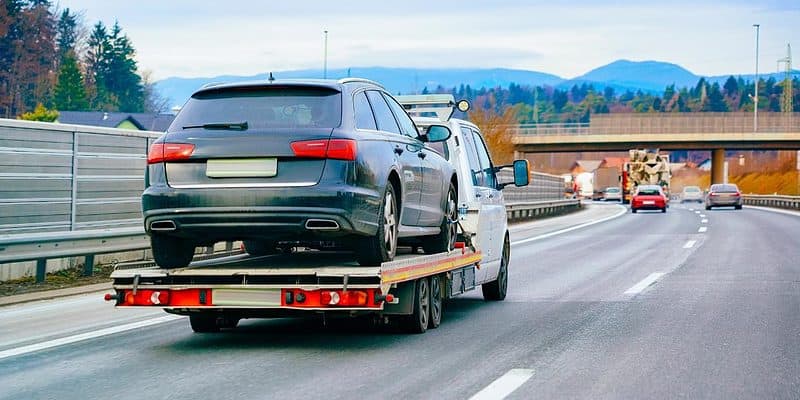
Owning a vehicle is one of life’s pleasures, but there are times when things go wrong. You might be cruising along the highway, and your car breaks down. You may even come across a collision with damaged cars needing assistance. In either case, there’s a need to transport immobile cars. And if you have a heavy-duty vehicle (such as a pickup truck or SUV), knowing how to tow cars will allow you to quickly and safely get the car to where it needs to be, whether that’s back home or a repair facility.
Although there’s no scenario where towing a car can be regarded as convenient, it always helps to be prepared for such events. This article will analyze how to tow cars and how to approach the situation to get your car transported to where it needs to be.
Towing Guidelines
- The car or truck doing the towing should always be larger and heavier than the car being towed. This is because more acceleration and braking power would be needed to get both cars to their destination safely.
- It’s best to use a flatbed trailer or at least a dolly for long-distance towing, while a chain or tow strap should only be used for very short distances at very low speeds.
- Follow all local laws, in addition to the laws of any other state you plan on traveling through. This includes using the appropriate towing lights and mirrors.
Driving Tips for Towing a Car
When towing a vehicle, there are certain guidelines you ought to follow to do it safely and with minimal risk. Here are some of them:
Drive Slower Than You Usually Would
Trailers and dollies can make your tow vehicle behave erratically at high speeds. For this reason, you should only drive slowly, at most 55 miles per hour (89 km/h) when towing. You should also leave plenty of room between your car and the one ahead to compensate for the extra braking distance required.
Easy on the Brakes
When towing a car, avoid sudden braking or panic stops. Any impulsive or sharp braking can damage the towing car’s brakes. That’s because pulling a car puts so much weight behind you, so you should slow your vehicle gradually. Also, ensure your brakes are up to the task and that your rotors and pads are in good condition before towing.
Use Your Mirrors and Turn Signals
Being aware of your surroundings and letting other drivers know your intention is crucial when towing as it helps prevent additional road problems. This is why you should always ensure your mirrors are correctly mounted, secure, clean, not cracked, and adjusted to the driver. Also, turn on the hazard lights of the vehicle you’re towing, and make sure your brake lights and turn signals work.
Exercise Caution When Changing Lanes
Be sure to change lanes with caution – you have to account for enough space for both vehicles, Including the far end of the car you’re towing, which you probably can’t see. Activate your turn signal, check your mirrors carefully, and slowly change lanes when it’s safe.
Avoid Sharp Turns
The extra length of the towed vehicle makes maneuvering much more difficult. You should only take wide turns and avoid the sharp and acute ones. This is because sharp turns are quite risky as they may result in the rear of the tow vehicle impacting the front of the car being towed, especially at high speed, causing damage to both cars.
How to Tow Cars Properly
There are several effective methods of towing a car. Nonetheless, you would need to consider a few things before deciding on a particular one. Although certain factors like distance/route might force you to use specific techniques, you still have to consider other elements, especially regarding your vehicle. For starters, you’ll need to know your car’s tow rating, drivetrain (four-wheel or two-wheel), and if it has a tow hitch—the owner’s manual should have the answers. You’ll also need to confirm whether the other vehicle uses an automatic or manual transmission.
That said, here are four methods of getting your towing task done safely and efficiently.
Method 1 of 4: Using a Trailer
Using a trailer is probably the safest method of towing a car, but it has drawbacks. The combined weight of the towed vehicle and trailer might be too heavy for the towing vehicle to handle. For this reason, you should always ensure the tow vehicle’s tow rating is enough to haul the weight of the vehicle and trailer.
Attach the Trailer
First, you must securely connect the trailer to the trailer hitch on the tow vehicle. Then, you can drive the tow vehicle forward slightly to ensure the trailer coupler is securely attached. Next, attach the safety chains from the trailer to the tow vehicle, and connect the wiring harness to the tow vehicle sockets. If the trailer has a brake battery, check its charge before embarking on a trip.
Load the Vehicle
Extend the trailer ramps and drive the towed vehicle onto the trailer. Center the towed vehicle and drive/ push it up the ramp, depending on whether it’s running or not. Continue driving until the front tires are resting against the tire stops at the front of the trailer. Put the transmission in “Park” and activate the parking brake. Secure the towed car to the trailer using straps/tie-downs.
Secure the Vehicle
Secure the towed vehicle to the trailer using tie-downs/straps and chains. Slide the ratchet straps over the center of the front tires, and open and close them until they are extremely tight. Fasten the security chains to the front and back of the vehicle frame, making sure to avoid brake and fuel lines.
Method 2 of 4: Using a Tow Dolly
A tow dolly is essentially a small trailer that keeps the front tires of the towed vehicle off the ground. With only the towed vehicle’s rear wheels in contact with the road, there’s less weight to pull, lightening the load for the vehicle doing the towing. This helps to reduce driveline wear and eliminate “pushing” of the rear vehicle when braking. Also, tow dollies are lightweight and can easily be rented at many moving storage facilities.
Connect the Tow Dolly
Attach the tow dolly coupler to the hitch ball on the towing vehicle. Seat the coupler on the hitch ball properly and hand-tighten the coupler until you have a tight and secure connection. Ensure the coupler is firmly fastened by moving the tow vehicle forward slightly or pushing the dolly to the rear. Fasten the safety chains on the dolly to the tow car for additional safety in case of a disconnection.
Load the Towed Vehicle
Line up the tow vehicle, dolly, and broken down vehicle on level ground. Slowly get the towed vehicle up onto the dolly (facing forward) by either driving or pushing it, depending on whether it runs or not. Move it forward until the wheels contact the stops.
Secure the Towed Vehicle
After loading the vehicle, secure it onto the dolly with the straps. The wheel straps will go over the front wheels and be tightened with a ratchet mechanism. Once this step is completed, loop the towed vehicle security chains around a frame member on the towed vehicle. Keep the chains away from easily damaged components such as fuel and brake lines.
Secure the Towed Vehicle
If towing a four-wheel or rear-wheel drive vehicle, you’ll have to disconnect the driveshaft to protect the transmission. To do this, you’ll have to crawl underneath the vehicle, locate where the driveshaft connects to the differential, look for the u-joint that holds the driveshaft to the differential housing, and secure the driveshaft to the undercarriage of the towed vehicle using a strap or bungee cord. Make sure it is secured to a firm part of the frame, not exhaust pipes.
Remove the four bolts at the u-joint, and push the drive shaft up as far as possible, adjusting the strap or bungee cord as needed. Tighten the bolts back into the yoke on the differential housing, or simply place them in a baggie in the glove box until needed again. If needed, repeat the steps for the other axle, such as in a four-wheel drive. If you do not feel confident enough to do the task yourself, you can call an expert mechanic to do it for you.
Method 3 of 4: Using a Tow Bar
Another method of towing a car is to use a tow bar. Tow bars generally have an A-frame design and mount to the towed vehicle, allowing all four wheels of the towed vehicle to rest on the ground while moving. For this reason, you’ll need to disconnect the driveshaft of the towed car to prevent transmission damage. Note that using a tow bar requires you to attach brackets to the frame of the towed vehicle. So, if you’re not comfortable doing this yourself, get an expert mechanic or auto body technician to do it.
Secure the Brackets
Using the tow bar as a guide, find suitable spots on either side of the front of the towed car’s frame and drill holes to secure the brackets. This will create two brackets to which you can attach and detach the tow bar quickly.
Check the Brake Lights
Before connecting the tow bar, ensure that both vehicles’ brake lights and turn signals work in sync. Buy a wiring system that lets both cars’ brake lights and turn signals work simultaneously. However, if this is a one-time event, you’re better off saving money by using removable tail lights which attach to the rear of the towed vehicle and connect with the tow vehicle’s electrical system.
Attach the Tow Bar
Secure the tow bar to the vehicle doing the towing. Then, connect the tow bar to the towed vehicle. You can do this by attaching the tow bar brackets on the towed car and securing the bolts using washers and nuts corresponding to the bolt size. Use a socket wrench to tighten. Next, attach the two tow bars coming from the brackets on the towed vehicle to the pivot bracket using bolts, nuts, and washers that come with the tow bar. Lastly, further secure the tow bar by fastening safety chains from the tow vehicle to the pivot bracket and from the base of the pivot bracket to the towed vehicle.
Method 4 of 4: Using a Tow Strap
A tow strap is unsafe and should never be used for long-distance towing. However, it comes in handy for very short distances. Using a tow strap is much faster and easier than any other towing device, and it could be a lifesaver if used correctly. For this reason, you should have one in your emergency kit in case the need arises.
Attach the Strap to the Tow Vehicle
First, inspect the tow rope/strap for any wear or tear. Ensure it’s in perfect condition to prevent it from snapping when pulling the broken-down vehicle. Next, locate the “recovery point” on the tow vehicle’s frame. Recovery points are usually holes cut into a vehicle’s frame, explicitly designed to run a recovery strap through it. If in doubt, refer to your vehicle’s “owner’s manual.” Once you’ve located the recovery point, attach one end of the strap.
Connect the Strap to the Towed Vehicle
Find the mounting hook underneath the front of the vehicle you need to tow. If unsure, consult the “owner’s manual.” Then, attach the other end of the strap while ensuring the rope is straight and free of twists. Do not, under any circumstance, attach the strap to the bumper or any other part of the car that isn’t intended for towing.
Pull the Vehicle Carefully
Before setting out, slowly move the tow vehicle forward until the strap is tight and inspect it again for any signs of damage. Once this is done, you are ready to tow the car. However, unlike other towing methods, you’ll need someone (an experienced driver) in the towed vehicle in case there’s an emergency. They’ll need to apply the brakes when you bring the towing vehicle to a stop. Also, avoid accelerating or braking abruptly to give the driver in the towed vehicle enough time to apply the brakes and bring the vehicle to a stop.
FAQs
Can You Tow an Automatic Car?
Yes. You can tow a car with an automatic transmission. However, you must lift the driven axle (or axles) off the road to prevent damage. This means you can’t pull an automatic car flat on the road, behind your buddy’s truck, using a rope or chain.
Can You Tow a Car With No Insurance?
No, you can’t. As long as the car’s wheels are in contact with the road, it should be insured. Although it may be broken down, there’s still a chance it could be involved in an accident in transit. With car insurance, you’re protecting against these events.
Can You Tow a Car on the Motorway?
It depends. You can’t tow a car on the motorway due to the extreme danger posed by fast-moving vehicles traveling on the carriageway to you and all other road users. However, if your car broke down on the highway, you do not have much of a choice.


